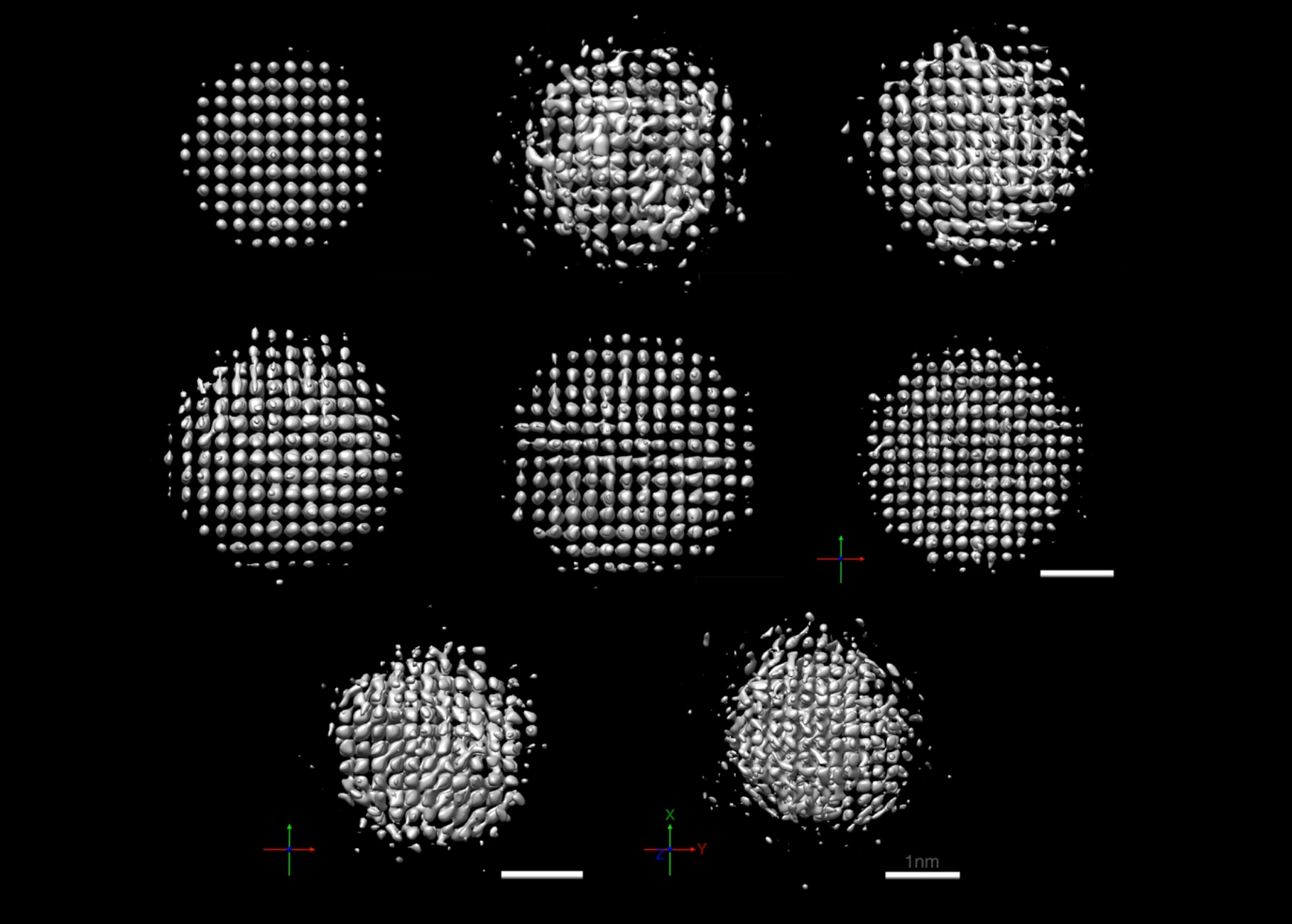VIDEO: 3D images of platinum particles between 2-3 nanometers in diameter shown rotating in liquid under an electron microscope. Each nanoparticle has approximately 600 atoms. White spheres indicate the position of each atom in a nanoparticle.
Since their invention in the 1930s, electron microscopes have helped scientists peer into the atomic structure of ordinary materials like steel, and even exotic graphene. But despite these advances, such imaging techniques cannot precisely map out the 3D atomic structure of materials in a liquid solution, such as a catalyst in a hydrogen fuel cell, or the electrolytes in your car’s battery.
Now, researchers at Berkeley Lab, in collaboration with the Institute for Basic Science (IBS) in South Korea, Monash University in Australia, and UC Berkeley, have developed a technique that produces atomic-scale 3D images of nanoparticles tumbling in liquid between sheets of graphene, the thinnest material possible. Their findings were reported April 3 in the journal Science.
“This is an exciting result. We can now measure atomic positions in three dimensions down to a precision six times smaller than hydrogen, the smallest atom,” said study co-author Peter Ercius, a staff scientist at Berkeley Lab’s Molecular Foundry.
The technique, called 3D SINGLE (Structure Identification of Nanoparticles by Graphene Liquid cell Electron microscopy), employs one of the world’s most powerful microscopes at Berkeley Lab’s Molecular Foundry. The researchers captured thousands of images of eight platinum nanoparticles “trapped” in liquid between two graphene sheets – called a “graphene window.”
These graphene sheets – each one just an atom thick – are “strong enough to contain tiny pockets of liquid necessary to acquire high-quality images of the nanoparticles’ atomic arrangement,” Ercius explained.
The researchers then adapted computer algorithms originally designed for biological studies to combine many 2D images into atomic-resolution 3D images.
The achievement, which improves upon a technique first reported in 2015, marks a significant milestone for the researchers. “With 3D SINGLE, we can determine why such small nanoparticles are more efficient catalysts than larger ones in fuel cells and hydrogen vehicles,” Ercius said.
Additional information:
- “3D Reconstructions of Individual Nanoparticles,” news release, Institute for Basic Science
- “A Most Singular Nano-Imaging Technique,” news release, Lawrence Berkeley National Laboratory (Berkeley Lab)
